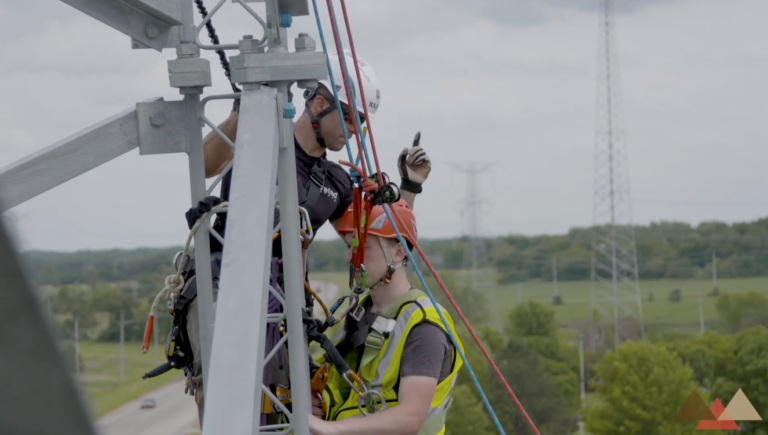Training Topics for Technical Rope Rescue Teams
Technical rope rescue is a critical skill for fire departments and search & rescue teams. It involves specialized equipment, training, and techniques to safely extract individuals from hazardous or hard-to-reach environments. From natural disasters and mountaineering incidents to urban rescues, technical rope rescue demands knowledge, preparation, and adaptability. Here are some Training Topics for Technical Rope Rescue Teams to include when training rope rescue teams, ensuring personnel are equipped with the necessary skills for safe and successful operations.
1. Emergency Rappelling
Emergency rappelling allows rescuers to quickly access victims in unstable or high-risk areas where conventional methods are impractical. For example, firefighters responding to victims trapped on steep cliffs or collapsed structures must be able to descend swiftly and safely. Proper training involves:
- Developing confidence in rappelling under pressure.
- Using personal safety equipment, such as descenders and rope protection.
- Practicing controlled rappels in varied environments to simulate real-world conditions.
Further Reading: Emergency Rappelling Techniques
2. Rope Anchor Systems
Rope anchors provide the foundation for any technical rope rescue system. They create stable points for attaching rescue systems, ensuring load stability and safety. For instance, rescuers working in mountainous terrain may construct deadman anchors in snow or use natural anchors like trees and rocks. Key components of rope anchor training include:
- Constructing multiple types of anchors (e.g., deadman, rock, and artificial).
- Ensuring proper load sharing and redundancy.
- Assessing anchor integrity under load.
Further Reading: Anchors, TTRS, and Hauling Systems
3. Highline Rescue
Highline rescue systems are designed to transfer victims or equipment across wide spans, such as gorges, rivers, or collapsed structures. This technique is particularly useful when vertical or horizontal access is limited. For example, in wilderness rescue, highlines allow for safe movement across rough terrain. Training should cover:
- Proper system setup using tensioned lines and mechanical advantage.
- Managing load movement to prevent excessive swing or sag.
- Using tensioning devices to maintain safe working angles.
Explore More: Highline Rescue Systems
4. Mechanical Advantage Systems
Mechanical advantage systems are essential for lifting, lowering, and controlling heavy loads with minimal effort. In real-world scenarios, such as lifting a victim up a vertical rock face, rescuers rely on pulleys and prusiks to multiply force. Training focuses on:
- Setting up 3:1, 4:1, and compound systems for lifting.
- Identifying and mitigating friction losses.
- Balancing load efficiency and system simplicity.
Explore More: Understanding Friction in Mechanical Advantage Systems
5. Confined Space Rescue
Confined space rescues, such as those in collapsed buildings, industrial silos, or tunnels, require unique skills and precautions due to limited mobility and oxygen hazards. Rescuers must:
- Use specialized breathing apparatus and gas monitors.
- Implement rope systems that work in restricted environments.
- Combine rope techniques with emergency medical care for victim stabilization.
Further Reading: Confined Space Rescue Techniques
6. Knots & Hitches
Knots and hitches are fundamental for rope rescue systems, ensuring ropes are securely fastened and loads are controlled. For example, a figure-eight knot secures victims to lowering systems, while prusik hitches add friction control. Training should emphasize:
- Selecting the correct knot for specific scenarios.
- Practicing knot security under load.
- Understanding the pros and cons of each knot in dynamic systems.
Explore More: Prusik Knots in Technical Rope Systems
7. Raising & Lowering Systems
Raising and lowering systems allow rescuers to move victims vertically while maintaining safety and control. Picture a team lowering a patient in a litter from a steep cliff using a 3:1 raising system. Training should focus on:
- Constructing mechanical systems for raising and controlled lowering.
- Managing transitions between systems during rescues.
- Ensuring rope systems remain under constant load control.
Learn More: Raising and Lowering Systems
8. Aid Climbing
Aid climbing allows rescuers to ascend or descend difficult vertical environments where free climbing is unsafe or impractical. Techniques include:
- Using ascenders, ladders, and etriers for controlled movement.
- Building secure systems for self-belay and load management.
- Combining aid climbing with mechanical advantage systems for efficiency.
Further Reading: Aid Climbing Techniques
9. Avalanche Rescue
Avalanche rescue combines snow science with rope rescue techniques to locate and recover buried individuals. Real-world scenarios include locating skiers buried in slide zones. Training covers:
- Using probes, shovels, and transceivers for victim location.
- Understanding snowpack stability and avalanche risks.
- Combining rope systems with rapid excavation techniques.
Explore More: Avalanche Rescue Systems
10. Night Operations
Night rescues introduce unique challenges, including low visibility, increased hazards, and difficulty coordinating movements. For example, a rescue team extracting a climber in darkness must rely on artificial lighting and sound communication. Training should include:
- Using headlamps, floodlights, and reflective markers.
- Navigating terrain safely with minimal light.
- Maintaining situational awareness during night operations.
Learn More: Night Rescue Operations
Key Takeaways
- Safety, adaptability, and technical proficiency are critical for successful technical rope rescues.
- Training must include hands-on practice for real-world challenges such as night operations, confined spaces, and highlines.
- Teams must remain prepared, confident, and up-to-date with techniques to minimize risks and maximize mission success.
With proper training, technical rope rescue teams can respond to any challenge, saving lives and ensuring safety in the most demanding environments.
Peace on Your Days
Lance










